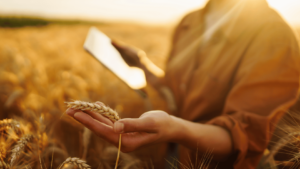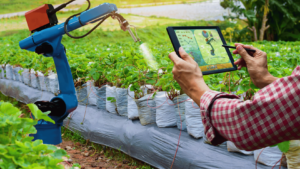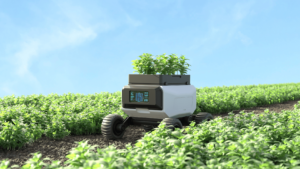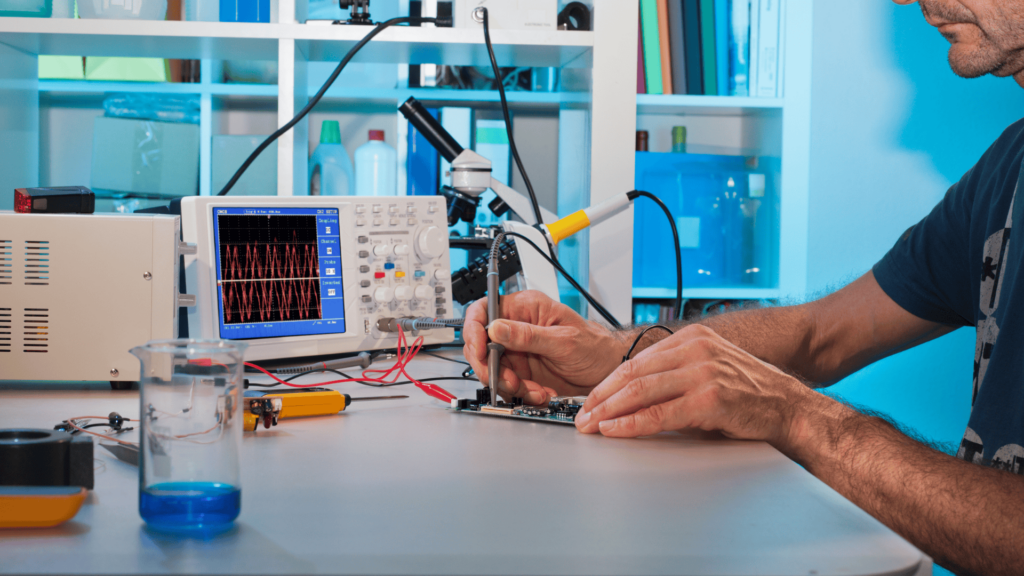IoT in Agriculture: Revolutionizing Efficiency with Smart Devices
September 15, 2024
Table of contents
The Internet of Things (IoT) is transforming industries worldwide, and agriculture is no exception. By integrating IoT into agriculture, farmers can now leverage smart devices to monitor, automate, and make data-driven decisions that enhance productivity, optimize resource use, and ultimately, increase crop yields and profitability.
Understanding IoT in Agriculture
IoT in agriculture refers to the use of interconnected devices and systems that collect, transmit, and analyze data to improve farming practices. These devices range from soil sensors and drones to automated irrigation systems and GPS-equipped tractors. With these tools, farmers gain real-time insights into their operations, enabling smarter, more sustainable decision-making.
The primary goal of IoT in agriculture is to create a more efficient and sustainable farming ecosystem. Thanks to IoT, this can be done by monitoring soil moisture, temperature, and crop health to provide actionable data for farmers

Key Benefits of IoT in Agriculture
1. Precision Farming: Optimizing Resource Use
Precision farming is one of the most significant benefits of IoT in agriculture. using IoT devices, farmers can apply water, fertilizers, and pesticides with pinpoint accuracy, reducing waste and environmental impact.
Soil sensors, for instance, detect moisture levels in specific field areas, allowing for targeted irrigation that conserves water and ensures optimal crop hydration.
Precision farming also extends to planting and harvesting. GPS-guided tractors and drones equipped with cameras and sensors enable farmers to map their fields accurately, ensuring even planting and efficient harvesting. This level of precision leads to higher crop yields and lower operational costs.
2. Enhanced Crop Monitoring and Management
IoT devices provide continuous crop monitoring, enabling real-time tracking of crop health and growth. Sensors detect variations in soil conditions, temperature, and humidity, alerting farmers to potential issues before they escalate.
Drones equipped with multispectral cameras can capture detailed images of crops, identifying areas of stress or disease that may not be visible to the naked eye. This early detection allows for prompt intervention, reducing the risk of crop loss and improving overall yield.
3. Automated Irrigation Systems: Saving Water and Energy
Water conservation is crucial in agriculture, and IoT-powered automated irrigation systems significantly reduce water usage. These systems can be programmed to operate during optimal times of the day, further conserving water and energy.
For example, When soil moisture sensors identify low moisture levels in a specific area, the irrigation system can trigger automatically to provide the precise amount of water needed. This not only saves water but also guarantees that crops receive uniform and sufficient hydration, resulting in healthier plants and increased yields.

4. Livestock Monitoring and Management
IoT technology is also transforming livestock management. Wearable devices monitor the health, activity, and location of animals, helping farmers detect early signs of illness and optimize feeding schedules.
Automated feeding systems ensure that livestock receive the correct amount of feed, improving animal welfare and productivity.
5. Improved Supply Chain Management
IoT plays a crucial role in enhancing supply chain management within agriculture. From tracking the transportation of produce to monitoring storage conditions, IoT devices ensure that food products maintain their quality from farm to table.
Sensors monitor storage conditions, ensuring optimal temperature and humidity levels to prevent spoilage. GPS tracking systems provide real-time updates on shipment status, helping farmers and distributors manage logistics more effectively.
6. Data-Driven Decision Making
One of the most powerful aspects of IoT in agriculture is the ability to collect and analyze vast amounts of data- leading to making more informed decisions.
For instance, data from soil sensors, weather stations, and crop monitoring devices can predict optimal planting and harvesting times, improving efficiency and yield.
7. Sustainable Farming Practices
IoT technology supports the implementation of sustainable farming practices by enabling more efficient use of resources and reducing the environmental impact of agriculture. By minimizing the use of water, fertilizers, and pesticides, IoT helps farmers conserve resources and reduce pollution.
Additionally, IoT can track farming activities’ carbon footprint, guiding farmers toward more sustainable practices. Prioritizing sustainability helps protect the environment while also ensuring the long-term success of farming operations.

8. Cost Reduction and Increased Profitability
By improving efficiency and reducing waste, IoT in agriculture leads to cost reduction and increased profitability. Automated systems reduce manual labor needs, and precision farming techniques lower input costs, such as water and fertilizers, boosting overall profitability.
The ability to monitor crops and livestock in real-time also reduces the risk of loss due to disease or environmental factors. As a result, farmers can achieve higher yields with fewer resources, ultimately boosting their profitability.
9. Enhanced Food Security
IoT technology contributes to enhanced food security by increasing the efficiency and productivity of farming operations. By optimizing resource use and reducing the risk of crop failure, IoT helps ensure a stable and reliable food supply.
In regions with challenging environmental conditions, IoT provides tools to adapt and overcome these challenges, ensuring a stable and reliable food supply. This increased resilience is critical for maintaining food security in the face of global challenges such as climate change.
10. Future-Proofing Agriculture
As the global population grows, the demand for food will rise. IoT technology is essential for future-proofing agriculture, enabling farmers to meet these demands while minimizing environmental impact.
Embracing IoT enables farmers to stay abreast of industry trends, integrate new technologies, and enhance their operations continuously. This forward-thinking strategy guarantees that agriculture stays sustainable, efficient, and equipped to tackle upcoming challenges.

Challenges of Implementing IoT in Agriculture
While the benefits of IoT in agriculture are clear, challenges such as high initial costs, data security concerns, and the need for technical expertise must be addressed.
However, as IoT technology becomes more accessible, these obstacles are likely to diminish. Backed by government and industry support, as well as technological progress, overcoming these hurdles will be crucial in promoting extensive adoption of IoT in agriculture.
Conclusion
The impact of IoT on agriculture is profound, revolutionizing the way farmers operate and manage their resources. By embracing IoT technology, farmers can achieve greater efficiency, reduce their environmental impact, and increase profitability.
As the global population grows, the continued integration of IoT into agriculture will be essential for ensuring a sustainable and secure food supply.
Looking to enhance your agricultural operations with IoT solutions?
Contact EKTOS Development today to explore how we can help take your products to the next level!



